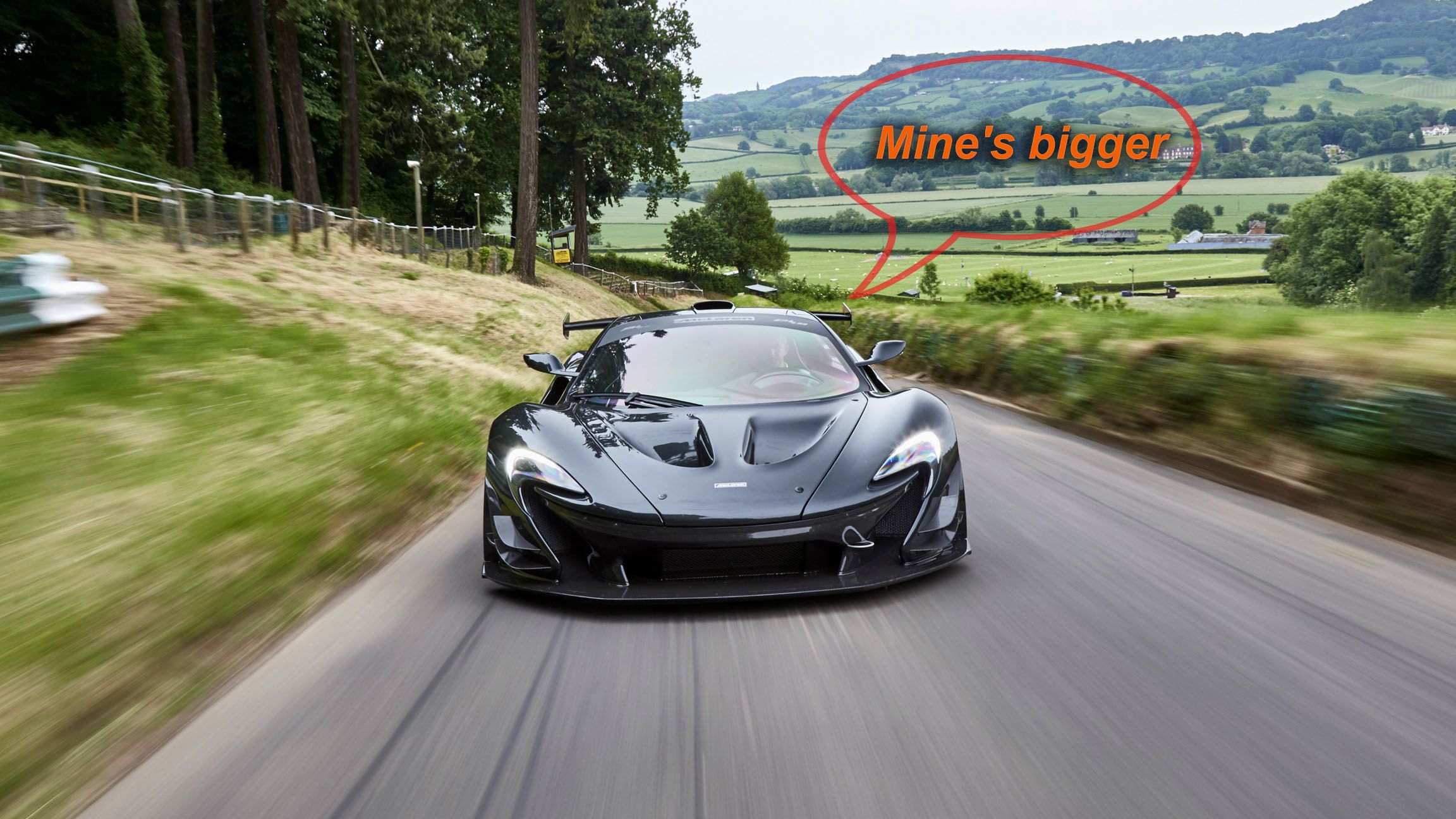Yee-haw, Pops is back! Did you miss me? In case you're wondering, I've taken a short vacation last week. Ya know, old people need to rest a lot. But if you don't care about that, we can assume I was too lazy to do my gibberish routine for the weekend.
Anywho, I came back to the Internet only to find out that we have a new Nurburgring record. Boy, I should definitely spend less time in bed - it's not the kind of activity that allows you to keep up with those fast Nurburgring runs. And you know what? I don't care much about McLaren's new record. And this comes from a man who lived to see McLaren's glorious Can-Am and Formula One performances back in the day and who's a tremendous fan of its road cars, especially the F1. Simply because all these records are only about automakers waving their pricks at each other.
Continue reading for the full story.
My Pecker Is Bigger Than Your Pecker
The Nurburgring is definitely a cool track with a ton of exciting history behind it. And it's still the venue of incredible racing that draws millions of spectators each year. But in recent years it has also become an arena where automakers bring their rulers to measure their schlongs. A couple of weeks ago, NextEV demonstrated quite a big reproductive organ. It's called the Nio EP9 and runs on batteries (yeah, haha, that's a dildo joke). But that didn't last long because McLaren has quite the long johnson in the P1 LM, which is now the king of the 'Ring with a six minute and fortysomething second lap. Officially, it's the quickest production car around the German track.
But there's a bit of a problem: the P1 LM isn't a full-fledged production car.
With only five units built, it's rather a very exclusive bespoke vehicle that wasn't even available to the market, being offered to select buyers. What's more, the P1 LM is actually a conversion by Lanzante Motorsport, a British company known for having won the 24 Hours of Le Mans with the F1 GTR back in 1995, and not a factory project. More importantly, the supercar was equipped with a specific set of Pirelli Trofeo tires that aren't available for purchase. Sure, I have to give McLaren credit for driving the P1 LM back to the U.K. after the lap, but it's still a highly modified version of a production supercar.
And the same goes for the Nio EP9, of which only six were built and delivered according to NextEV, with some more ten units to follow. Things are rather foggy here so take it with a grain of salt. And speaking of tires, it's a common trick for automakers at the 'Ring. The Huracan Performante also used bespoke tires, while Nissan was often criticized for doing the same thing plus other modifications to GT-R Nismos used on the German track. So yeah, this Nurburgring lap record thing is rather silly because you, the buyer, don't get the same exact configuration. And as it is the case with many cars from the Top 10 list, you can't even buy them.
|
|
|
So it would be fair to rename this ludicrous contest the "fastest production car with whatever modifications we feel like adding so that our pecker looks bigger at the end of the day." There, I fixed it!
Oh yeah, and the same goes for the fastest production car in terms of top speed. It's equally silly and pointless since the Bugatti Veyron cannot reach its ridiculous top speed with a regular customer behind the wheel. Before you know it, manufacturers will set new records by adding jet propulsion to the cars just for the said run. And of course, the next fastest production car in the world will be limited to just one unit, which will be safely parked in a museum.
Donald Trump Blah Blah... Paris Agreement... Covfefe
Oh wow, so much Trump action lately. I have to admit that the "covfefe" thing is rather funny and I enjoyed readying the many replies he got, but how about you stop treating the U.S.' withdrawal from the Paris Agreement like it will summon the apocalypse? You know it will take the U.S. until 2020 to completely withdraw from that, right? The process can only be activated three years after entering the agreement, which sets the date at November 2019. From there on, the withdrawal period takes a year, meaning November 2020 is the earliest the U.S. could fully extract itself from the program. And it's not like the Paris Agreement can't continue without the U.S. Not to mention that it's not like the U.S. will abandon the green path. It's the large companies that push through, not the government. The latter can stimulate the process with subsidies and various laws, but big firms -- such as Tesla and Apple for instance -- will always push themselves toward a more sustainable future. And you know what, by the time the U.S.' withdrawal process begins, Trump may no longer be president. And let's be honest here, he won't get a second chance in office. So yeah, big whoop!

